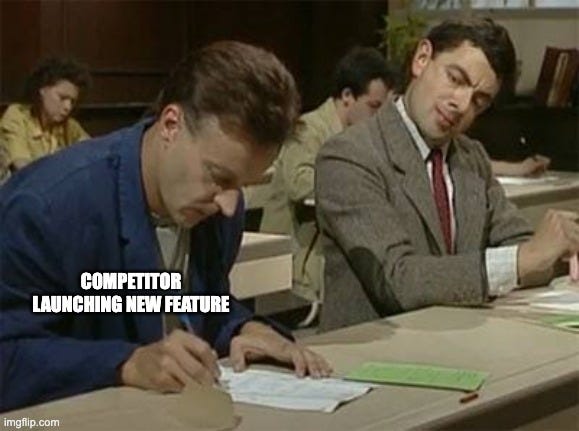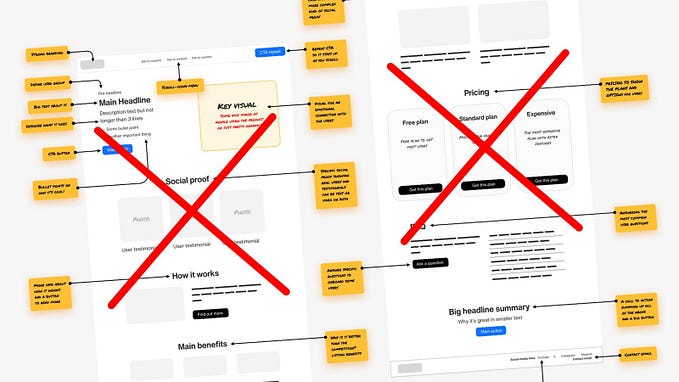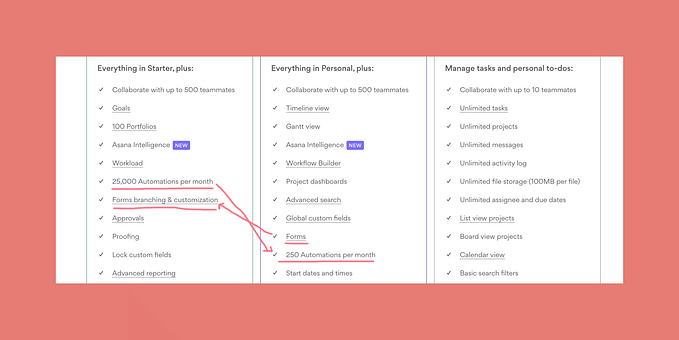Paying down your product content debt
Step 1: Accept that you have debt to take care of.

Every product is different. Every product team is solving different problems, has varied priorities and different levels of time and resource availability. This makes it hard to define a one-size-fits-all solution to pay down a product’s content debt.
If you’ve accepted that you’re dealing with content debt, that’s a great first step right there. And, for those who still haven’t, here’s why you should be thinking about tackling your content debt now. (Hint: It may be driving your users away!)
So here’s a set of practical steps that your team can adopt to banish content debt. You can scale these steps up or down to fit the needs of your product and team. Of course, this is not the only way. So here you go:
Choose a starting point
In the ideal world, this wouldn’t be the first step. A thorough content audit would be what should’ve made it to the top. But oftentimes, product teams build products without a content strategist on board. This means that most products may have acquired some amount of debt over the years. Content strategists don’t always have the luxury of starting afresh and changing every aspect of the product’s content.
So pick a few pain points that you need to handle first. A few good starting points are your onboarding flows, checkout flows, your top 3 most used features and/or your most recently introduced features. Once you’ve listed down what you want to tackle first, you need to have an idea of what you’re working with.
Conduct a content audit to spot debt
A content audit is not just about listing down all the available content that lives in your product on a large spreadsheet. That’s only one step of the content audit process and it’s called content inventory.
A content audit, involves taking a more qualitative look at this list. You evaluate the content that exists, analyse what’s not working and decide what you want to do to fix this.
Often, content strategists start off content audits with a goal in mind. Like, for instance, do away with voice and tone inconsistencies or do away with repetitive or superfluous content. But unlike in the case of websites, it’s not always easy to single out these goals while working with product content.
As Virginia Start rightly points out, “product content doesn’t live in one location”. And, it is “part of a dynamic user flow that involves complex interactions and results in content variations.” She also gives a good step-by-step guide on how to conduct a product content audit. So take out those spreadsheets and start getting your hands dirty with your product’s existing (and non-existent) content.
At this point, look out for whether the existing content serves the user experience. Does it inform and guide the user or irritates and confuses them? And that’s when the qualitative aspect of this exercise becomes important.

Melanie Seibert, in her Become A Content Strategist course, advises on how to rate existing content. She suggests three factors to rate your content on
- how “findable” it is
- how “actionable” it is, and
- how “understandable” it is.
Although she talks more in the context of web content audits, this can be extended to your product’s content as well.
Some of the points you can rate the content on are:
- How clear is the content?
- Does it encourage the user to take action?
- Does it appear in a space and at a time that would help the user?
- Can you say it in fewer words?
- Is it consistent with your brand voice?
- Does it use words that users aren’t familiar with?
- Does it guide the user to the next step?
Validate your audit with tests
Your spreadsheets and content ratings are ready, and you’ve figured out if there are content gaps, if any. But as we know, design is a collaborative process. So it helps to introduce some fresh eyes to look at the content and your findings at this moment.
Testing it with users is the best, of course. If getting real users to test is difficult or too expensive, test it with your coworkers. In these tests, go through the existing flows as it is. Check for the list of qualitative factors you had rated the content on earlier. How do users rate this content on clarity? Does the content help them get ahead or does it confuse them? Or, does it work too hard and annoys them?
You may discover new insights into not just the existing content, but also to how your users consume your product’s content.
With these test results, go back to your ratings and see if you need to rework it. Once you’ve added your users’ insights to your content audit findings, you’re ready to move on.
Talk to people who can help you make changes
If you have your product manager on board right from the beginning of this pay down process, that’s great! For content strategists who are working on debt independent of product teams, this is the right time to involve the people who can help you fix this debt.
You’ve a list of existing content; you’ve identified gaps in your content; you even have results from user tests. It’s hard for product managers and developers to say no to you if you’ve already done so much of groundwork. So find the right person for every part of the product you want to work on. Report your findings to them and see if they’re open to implementing these changes.
Remember that it always helps to establish relationships with designers/developers/product managers. They can guide you on how viable the changes you’re recommending are and how long it’ll take to implement these changes. Once you’ve established a connection, involve them in the next step.

Prioritize what to fix first
Sit with your product manager, or whoever is responsible for this content, and figure out priorities. Your team can use your own methods to prioritize these content fixes.
A good method teams use for this is the impact/effort matrix. This matrix helps teams rank tasks according to the impact it will have on the user, and the level of effort that’ll go into getting it done.
Some teams use a 2-axis version of this matrix, in which they map tasks based on high- and low- impact against high- and low- level of effort to implement it. Michelle Chin, founder of the exploreUX meetups, writes about the limitations of such a matrix.
“In my experience working with different groups, I’ve seen people get hung up on the 2-axis design. They usually get hung up on the nuances of accuracy and it stalls productivity,” says Chin. “When looking at it from a a high level, this fine-tuned accuracy isn’t important. The 2-axis design is vague, which makes prioritizing items difficult. People have to re-interpret an item’s placement and then compare it against other items. This causes unnecessary fatigue and distraction to the activity.”
Chin suggests using a 3X3 matrix with the space for medium impact and medium effort factored in. This will ensure that your team is more productive and make sure that things move ahead.
Create appropriate fixes
Now, this is when you get things done. Go by your priority list and work out fixes for content issues you had identified. If you’ve the time and resources for it, this is when you’d test these changes again. Test your new content for the same qualitative factors that you were trying to improve. See if the new fixes have changed the impact and usability of the flow. Take another look at your content and work on it again if needed.
At this point, work with your product manager to assign responsibility to someone from the development team to make these changes. Collaborate with them to get more details about things like in which release cycle you can expect to see these changes. And, also set up some metrics to measure the impact of the changes you just made.
Paying down content debt is not just about fixing existing problems. It is also about ensuring that you can identify and even prevent future problems before they arise. So measure, measure and keep measuring.
Finally…
Show that the changes you made had some demonstrable impact. This will surely earn you and content some space on your product team. This would, then, turn out to be the first steps your organization takes towards content maturity.
It’s not easy for every one to revamp content on a large scale. And, you will find that some of these steps need a lot of time, effort and support to be seen through till the end. So no matter what the size of your team is, start small. Have an idea what you’re tackling and tweak this process to work for your team and product. Remember that even small changes can make huge differences. You just have to start somewhere.
Over to you
What is your team’s process of paying down content debt? I’m sure a lot of us here would be interested to know. Share your thoughts and ideas in the comments section below.
Next up, how to create a content-led design culture in your organization.









